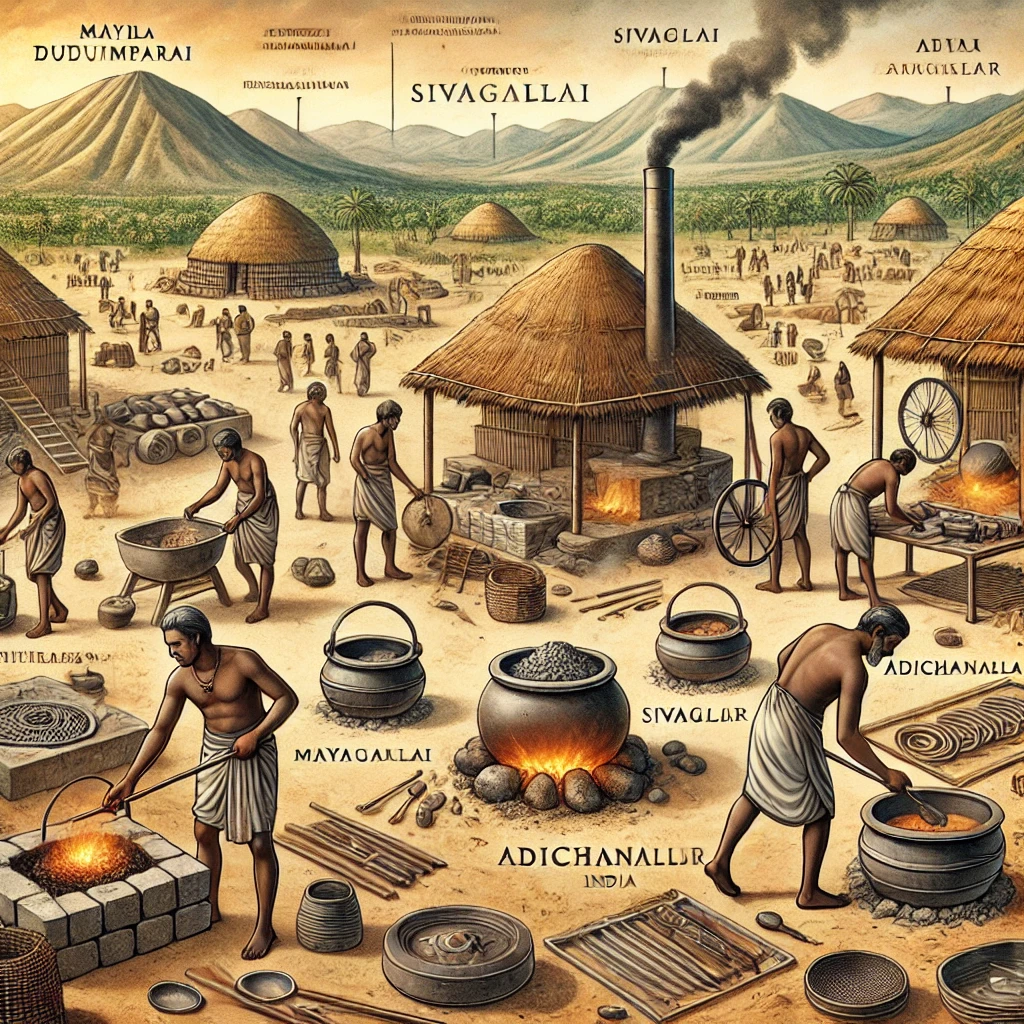Imagine a time when people discovered a new metal that changed the world. This is the story of the Iron Age in India—and many researchers now believe that Tamil Nadu played a major role in this transformation.
A New Look at the Iron Age
For a long time, scholars thought that iron came to India much later, around 700 to 600 BCE, and that it entered the country through immigrants from the West. However, more recent research, including radiocarbon dating and careful excavations, suggests that people in India were using iron much earlier than previously believed. Some new studies even claim that iron was first used on Tamil soil over 5,300 years ago during the 4th millennium BCE. This groundbreaking idea, supported by archaeological findings, challenges old beliefs and suggests that our history may be even older than we once thought .
Exciting Discoveries in Tamil Nadu
Archaeologists in Tamil Nadu have uncovered evidence that shows the region was quick to transition from using copper and bronze to working with iron. Excavations in important sites such as Mayiladumparai, Sivagalai, Adichanallur, and Kilnamandi have revealed iron artifacts, ancient furnaces, and well-crafted tools. These discoveries indicate that people in Tamil Nadu were smelting iron and creating finished items much earlier than their counterparts in northern India. Here are some interesting figures:
- 5,300 Years Ago: Some iron artifacts in Tamil Nadu have been dated to this period, suggesting a very early start to the Iron Age.
- 4th Millennium BCE: This era marks the possible beginning of iron usage in the region, well before the commonly accepted timeline for the rest of India.
- Multiple Excavation Sites: Findings from at least four major sites in Tamil Nadu have collectively changed our understanding of early iron technology.
How Iron Changed Life
The discovery of iron had a huge impact on society. Iron is stronger and more durable than bronze, which means it could be used to make better tools, weapons, and farming equipment. With iron tools, farmers could plow fields more efficiently, leading to better harvests and a stronger food supply. Soldiers armed with iron weapons enjoyed a significant advantage in battles, which in turn influenced the formation of kingdoms and empires in ancient times.
In Tamil Nadu, the early adoption of iron is seen as a sign of innovation and progress. It demonstrates that the people were not only skilled at making tools but were also quick to adopt new technologies to improve their lives. These technological advances laid the foundation for many developments in art, architecture, and everyday life.
A Matter of Debate
While there is strong evidence that Tamil Nadu was a pioneer in using iron, scholars continue to debate whether the entire Iron Age began there. Some experts caution that even if iron was used early in Tamil Nadu, this does not automatically mean that the Iron Age as a whole started in that region. Nonetheless, the exciting discoveries have made historians and archaeologists rethink the story of India’s past, leading to fascinating debates and new research directions.
Interesting Figures at a Glance
- Early Iron Use: Evidence suggests iron was in use in Tamil Nadu over 5,300 years ago.
- Timeline Shift: The region’s transition to iron dates back to the 4th millennium BCE.
- Key Excavation Sites: Mayiladumparai, Sivagalai, Adichanallur, and Kilnamandi are among the sites that have provided crucial evidence.
- Technological Leap: Iron tools replaced bronze and copper artifacts, marking a major technological advancement in ancient society.
Why It Matters Today
Understanding how and when iron was first used helps us appreciate the ingenuity of our ancestors. It shows that ancient people made groundbreaking discoveries that still influence our lives today. The story of the Iron Age in Tamil Nadu is not just about a metal—it is about human creativity, adaptation, and the drive to improve the world around us. By learning about these ancient innovations, we can better appreciate our history and the many contributions early civilizations made to our modern world.
This engaging journey into the past, filled with fascinating figures and discoveries, inspires us to explore, question, and celebrate the remarkable progress of humanity over thousands of years.




